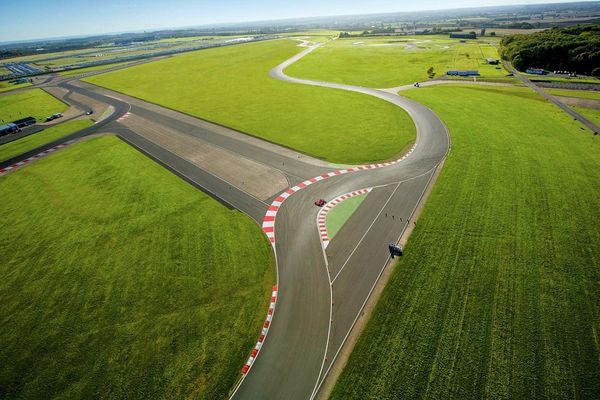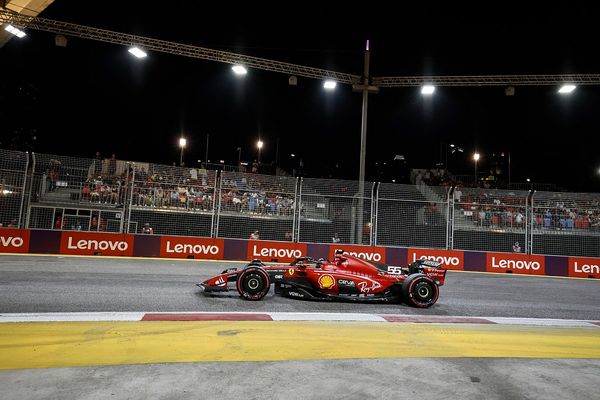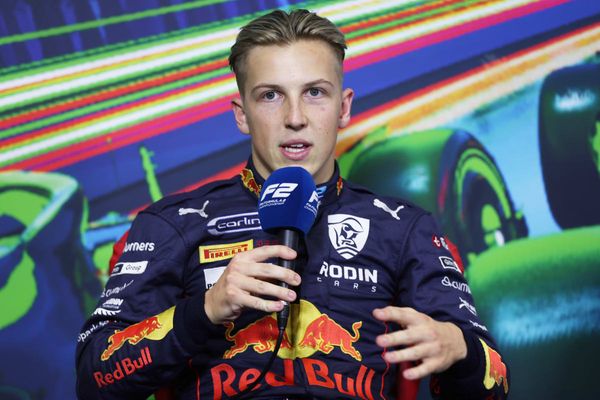
It took Lola five attempts to win the International Formula 3000 championship in 1989. But its 1987 T87/50 was the first to truly make an impression on the rung below Formula 1 and finished runner-up in the standings with Luis Perez Sala. It therefore was an important machine both for establishing Lola in a battle largely dominated by March and Ralt, and also for the Spaniard who picks it as his favourite car.
Perez Sala mustered a single F1 point for Minardi in the 1989 British Grand Prix, becoming only the third driver from his nation to score a world championship point and the first in over 30 years. But finding the cockpit of the Cosworth-powered M189 and its M188 predecessor cramped and uncomfortable, the 64-year-old struggled to match team-mate Pierluigi Martini and as such he “didn’t find [them] maybe as happy as the Lola”.
“It was not as powerful as Formula 1, not as good in terms of braking power and not as good in terms of speed on the corners,” reflects Perez Sala, “but very well-balanced and I also feel very comfortable inside the cockpit. [In the Minardis] I was not comfortable in the cockpit. I was touching with the shoulders, with the knuckles of the hands turning the steering wheel, it was hard to drive.
“In the Lola I had the space to move, and the car was fantastic as well. I remember the team was almost a Formula 1 team with the chief engineer, Lola behind, testing new parts. It was very professional.”
Top 10: Ranking the greatest Lola racing cars
Perez Sala had established himself as an F3000 winner during his 1986 rookie year in the Pavesi Ralt team, taking a breakthrough victory at Enna and splashing to a half points maximum score in the rain-shortened inaugural Birmingham Superprix. Between he and team-mate Martini (who stepped back to F3000 after a rough rookie season with Minardi in 1985), Pavesi won more races than Ron Tauranac’s works Ralt team.
But the loss of Perez Sala’s main backer Campsa meant a return to the Italian squad he’d also driven for in Formula 3 wasn’t on the cards for 1987 and this put his continued F3000 participation in jeopardy. So when Jean-Francois Mosnier got in touch about driving for his Lola Motorsport team, with no obligation to pay unless Perez Sala reached F1 within two seasons, a deal was quickly concluded.
“[Mosnier] bet with me – no?” says a grateful Perez Sala, who remains active as a driver today through his role developing Hispano Suiza’s Carmen Boulogne electric hypercar. “He had a lot of pressure as well. He believed in me, he pushed and he supported me to be there and that is something that I appreciate a lot.”

The 1986 Lola T86/50 designed by Ralph Bellamy had won just once in the opening round at Silverstone, in slightly unconventional circumstances. An ill-timed red flag for on-the-road leader Emanuele Pirro, whose Onyx March 86B had just been caught in lapped traffic, reduced his advantage over Pascal Fabre and thus dropped him behind the Frenchman on aggregate. But Fabre would only visit the podium twice more as Ivan Capelli’s Genoa March and the Pavesi Ralt RT20s established themselves as the ones to beat.
Insight: How Lola rose to rule F1's feeder series
For 1987, Huntingdon’s F3000 project was overseen by Mark Williams and the result was a car that allowed Perez Sala to be a much stronger force in qualifying. His only podiums had been wins in 1986, but in 1987 he was altogether more consistent and emerged as the closest challenger to Onyx March driver Stefano Modena. Perez Sala won twice from pole at Donington and Le Mans and as works Ralt driver Roberto Moreno’s challenge was tripped up by a series of niggling issues, only Perez Sala could deny Modena at the Jarama finale.
He came in high on confidence winning the penultimate round at Le Mans, where Modena suffered an engine failure. Perez Sala relished the ongoing development on the T87/50 and recalls a huge benefit from a rear suspension update at Le Mans that “worked very well, the car was fantastic”.
"I remember the team was almost a Formula 1 team with the chief engineer, Lola behind, testing new parts. It was very professional" Luis Perez Sala
But he knew the odds were stacked against him in Spain, with a victory not enough if Modena finished sixth or better. Perez Sala admits to being more focused on securing second ahead of Ralt team-mates Moreno and Mauricio Gugelmin, who were one and eight points behind respectively.
In changeable conditions, Perez Sala was unable to capitalise on Modena’s worst qualifying of the year. He started 18th, with his main adversary in 23rd. The right call for the race was slick tyres, which helped ORECA March driver Yannick Dalmas to advance from 14th to victory, but Perez Sala went for wets and had to change. He ended up fifth, one spot ahead of fellow stopper Modena, while both Ralt drivers failed to score.
Insight: Yannick Dalmas picks his favourite team-mate
“After the Le Mans race I said to Mark Williams, ‘I have to remember how this car is working, how I feel this car because it’s not easy to have a better car than this,’” he says. “In Le Mans, it was a super feeling. For sure, the best car in that moment in that circuit. Unfortunately, in Jarama it was not the same!”
More drivers won International F3000 races aboard the T87/50 than any other marque in 1987. Michel Trolle triumphed aboard his GBDA example in a wet-dry race at Spa, stopped for a violent accident at Raidillon involving Perez Sala and compatriot Alfonso de Vinuesa, while Julian Bailey became the third different Lola winner of the year for GA Motorsport at Brands Hatch. After ditching his 87B, Madgwick’s Andy Wallace also shone once armed with a Lola and led most of the race at Jarama before being tripped up in traffic late on.

The T87/50 was a hit too in Japan, which belatedly ditched Formula 2 and only embraced F3000 regulations for the first time in 1987. Lola won that year’s title with Kazuyoshi Hoshino, who also defected from March after winning the opening round, ultimately tallying four wins and eight pole positions (seven scored by Geoff Lees) from the nine races.
Top 10: Ranking the top 10 winless Formula 3000 drivers
Far from the laughing stock it had been in 1985 with the ungainly T950, Lola was on the up by the end of 1987. And so too was Perez Sala, for whom the T87/50 was his launchpad to achieving his lifelong dream of reaching F1.
“I have been very lucky to be in this world and I have been very happy,” he says. “I would like to be world champion, but sometimes you cannot achieve that because the others are better than you.”











